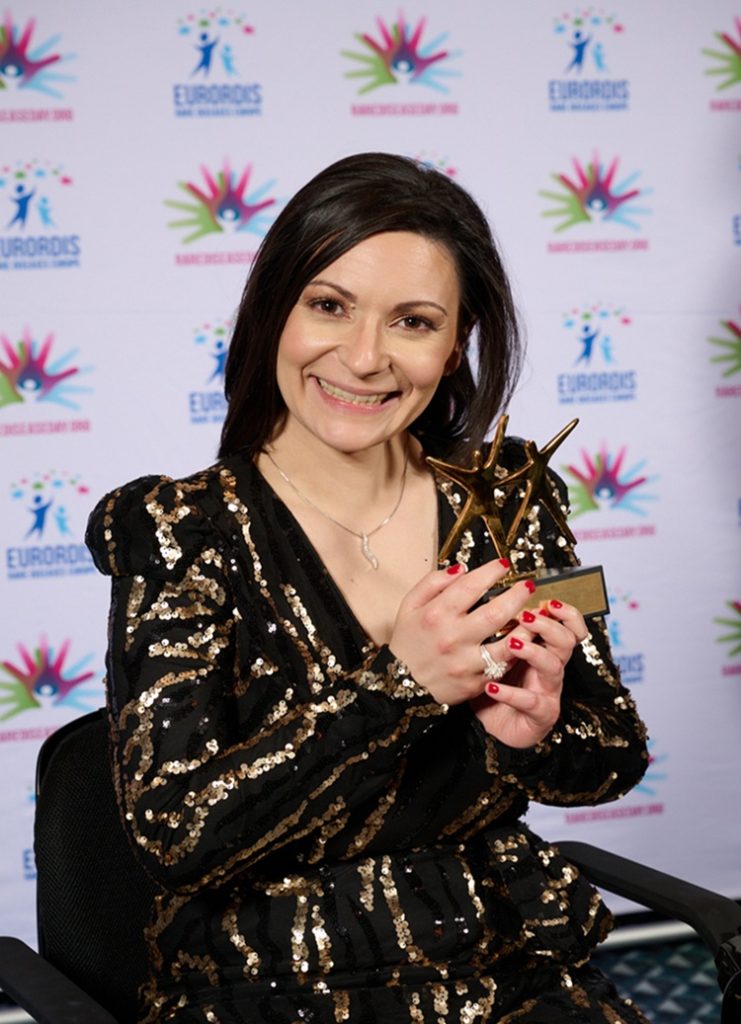Putting rare diseases at the heart of the EU Life Sciences Strategy
May 2025As the European Commission prepares to unveil its Life Sciences Strategy next month1, rare diseases offer a compelling test case for what the EU claims it wants to achieve: greater innovation, reduced dependence on external players, and global industrial leadership.
This forthcoming strategy – flagged in the Political Guidelines 2024–2029 and central to the European Commission’s Competitiveness Compass – promises to strengthen life sciences research and innovation across health, agriculture, energy and biotech. It aims to accelerate Europe’s green and digital transitions while restoring its competitive edge in high-value, knowledge-driven sectors.

Nowhere is that ambition more actionable – or more urgently needed – than in the field of health innovation, and specifically rare diseases. Some 30 million people in Europe live with a rare condition, and 95% of these diseases still lack an approved treatment2. That is not just a health gap; it is a missed opportunity to lead in fields where Europe already has a strong scientific base, from genomics to advanced therapies.
From market failure to innovation driver
Small, fragmented patient populations often fall below the threshold of commercial viability, leaving treatments undeveloped and communities underserved. But this is more than a moral lapse – it’s a missed industrial opportunity for the EU.
Time and again, rare disease research has driven breakthrough advances, from gene therapies to genomic diagnostics, which go on to power growth across Europe’s medical research and innovation sectors.
“As parents who lost their daughter Amélie to a rare disease called Tay-Sachs, and who also established an advocacy group for the community called the Cure & Action for Tay-Sachs (CATS) Foundation, we know too well the devastation caused by delayed diagnosis, lack of treatment options, and fragmented care. A future Europe must commit to a life sciences strategy that puts rare disease families at its heart, amplifying the voices of those who are actually living it by funding innovation with urgency, and ensuring no family faces this journey alone. The CATS Foundation, like many rare disease charities, has shown what’s possible when patient-led advocacy drives change. It is now vitally important that Europe must follow this lead with real, coordinated action as our rare disease community cannot afford to wait.”
Patrícia Durão & Daniel Lewi, co-founders of The Cure and Action for Tay-Sachs (CATS) Foundation, on the need for urgent, coordinated investment in rare disease research and innovation
At the same time, rare diseases impose substantial and avoidable economic costs. A 2024 study put the annual burden of just 43 rare diseases in nine European countries at €249.3 billion – far surpassing the €176.8 billion cost of cardiovascular disease across the same nations33. With most rare diseases beginning in childhood, this burden extends beyond healthcare, encompassing lost productivity, long-term care, and social services.
An ambitious Life Sciences Strategy can shift both sides of this equation – catalysing future innovation while alleviating the heavy costs that are currently holding it back.
The EU is uniquely placed to act. Through cross-border research, shared data, and collaborative networks like the European Reference Networks (ERNs), it can accelerate life sciences innovation at a scale and pace no single country can achieve alone.
Rare diseases as launchpads for scientific leadership
Rare diseases have often served as proving grounds for breakthrough medical technologies. Gene therapies, RNA-based treatments, and CRISPR genome editing – technologies now poised to transform care for more common diseases – were first translated into clinical use in rare conditions. With a strong scientific base in this field, Europe is well-positioned to lead in applying these tools more broadly.
Yet today, Europe is falling behind in medical research. Between 2014 and 2018, clinical trial growth was less than 2% in Europe, compared to 36% in North America and 28% in Asia44.
More than 70% of rare diseases have a genetic origin, making them prime candidates for genomics and advanced therapies55. National initiatives in multiple EU countries have already used rare diseases as launchpads for progress in precision medicine. If the EU embraces this approach more strategically at scale, it can help restore European leadership on the global stage.
“Today, I don’t worry about my son’s health, but before I didn’t have a lot of treatments or medicines to give him. Rafik today can go to school and do sports. Also, now I can do something for myself because for seven years it was all for Rafik. I don’t regret it, this is my role as a mother, but today I think that I can do things for me, I can continue to learn, read, do sports and work. This has changed my life. […] So there is a big difference between before gene therapy, and 4 years after gene therapy.”
Khadidja Hadri, a mother of a child living with ADA-SCID, speaking on the EURORDIS Rare on Air podcast about the life-changing impact of accessing a gene therapy developed through rare disease research.
From dependence to resilience
COVID-19 laid bare Europe’s vulnerability to external suppliers in life sciences. Investing in rare diseases – with their long timelines, advanced platforms, and infrastructure needs – can help rebuild domestic strength and reorient global supply chains. It is also a chance to anchor industrial competitiveness in areas with high public value.
By targeting its investments wisely, Europe can develop the R&D, regulatory, and manufacturing capabilities that power broader competitiveness – all while advancing treatments for some of its most underserved citizens.

“Life Sciences Strategy is going to be a cornerstone of meaningful progress in the rare disease field. Future-proofing this progress requires a robust and reliable foundation on which all stakeholders can build and advance science with patients at the centre. Without a sustainable, comprehensive, and stable environment for growth, we cannot fully harness the potential of advanced technologies and artificial intelligence.
Moreover, addressing emerging health threats demands a systemic approach grounded in the principles of One Health – where the well-being of humans, animals, and the environment is equally valued and intrinsically connected.”
Tomasz Grybek, EURORDIS Board Member and CEO of the Foundation of Borys the Hero, on why a strong EU Life Sciences Strategy is crucial for scientific and geopolitical resilience.
Policy Actions: What Europe Must Do Now
- Fund research end-to-end – from basic science to translational trials.
The EU must invest across the full innovation pipeline for rare diseases – from basic science to translational trials. This includes dedicated funding calls for under-researched diseases, support for proof-of-concept studies, and sustainable financing for infrastructures like European Reference Networks (ERNs) and registries. Cross-border hubs should be created to pool expertise and resources at scale.
- Modernise regulation – with adaptive trials, fast-track reviews, and sandboxes.
Smarter, more flexible regulatory tools are needed to accelerate access without compromising safety. EURORDIS calls for adaptive trial designs, early advice for academic and SME developers, and regulatory sandboxes that allow innovation to be tested in real-world settings. Mechanism-of-action-based pathways should also reduce the need for repeating evidence generation for similar technologies.
- Guarantee equitable access – with joint procurement and EU-wide coordination mechanisms.
Access to rare disease therapies remains uneven between Member States. EURORDIS recommends joint procurement mechanisms, greater coordination in pricing and reimbursement, and EU-level funds for post-marketing evidence generation to support affordability and long-term access.
- Build data infrastructure – mandating ORPHAcodes and connecting registries.
Mandating the uptake of ORPHAcodes across national systems – and aligning them with global coding standards like ICD-11 and SNOMED CT – will improve consistency as well as visibility of rare diseases in healthcare systems, a precondition for harnessing data sharing. The EU should also invest in interoperable registries, FAIR data platforms, and real-world evidence systems to support both care and research.
- Invest in workforce and manufacturing – including GMP facilities for ATMPs.
The Strategy should support training in diagnostics, genomics, and ATMP delivery. Building a skilled and sustainable workforce, including clinicians, researchers and technicians, is essential to advancing innovation and ensuring its implementation across healthcare systems. Public investment is needed in shared GMP-compliant manufacturing infrastructure, especially to support academic and non-profit developers working on small-population therapies.
- Empower patients – by funding them as co-designers and contributors to innovation.
Patient organisations must be funded and supported to lead and co-design research, policy, and innovation, and recognition should be made of the essential role of patients in guiding research and innovation on the conditions they live with. Their contributions should be compensated and embedded at all stages of the life sciences ecosystem – not simply recognised as in-kind input.

“We need to bridge the translational gap in life sciences and bring academic research to societal impact, particularly in the area of rare diseases. Effective collaboration can address bottlenecks, progress early research, and ensure the lived experience of patients is at the centre.”
Michela Onali, patient advocate living with GNE Myopathy, on the importance of early involvement and cross-border collaboration.
A strategic imperative
Rare diseases are where unmet medical need, scientific potential, and Europe’s broader strategic ambitions converge.
By acting on the recommendations put forward by EURORDIS and the wider rare disease community, the EU can deliver maximum value to patients – while strengthening its global competitiveness in medical research and development, against the backdrop of an increasingly challenging geopolitical landscape.
As the Life Sciences Strategy takes shape, rare diseases must not be treated as peripheral. They are the sharpest lens through which Europe can refocus its vision for leadership in science, health, and innovation.
“The cost of delayed diagnosis in rare and undiagnosed diseases is not just time lost — it’s lives lost. I live with a rare terminal illness, ROHHAD syndrome, which I had to diagnose myself after years of being dismissed as psychosomatic. … But rediscovering hope came through turning pain into purpose. … A robust Life Sciences Strategy poses a real opportunity to prevent these failures by embedding early diagnosis, innovation, and patient-centred approaches into healthcare systems.”
Rita Fussenegger, CEO and Founder of USE (Undiagnostizierte und Seltene Erkrankungen), on how Europe’s strategy could help prevent diagnostic failure and build more responsive health systems.
- Science|Business (2025) European life sciences strategy fosters hope for more cohesive policy. ↩︎
- EURORDIS (2019) Rare2030 Trends. ↩︎
- CRA (Charles River Associates) (2024) The Economic Cost of Living with a Rare Disease Across Europe. ↩︎
- Alliance for Regenerative Medicine (2019) Clinical Trials in Europe: Recent Trends in ATMP Development. Washington, D.C. ↩︎
- EURORDIS (2025) Feedback on the European Commission Consultation on the EU Life Sciences Strategy. ↩︎
Julien Poulain, Communications Manager
Claudia Gugliuzzo, Communications Intern
